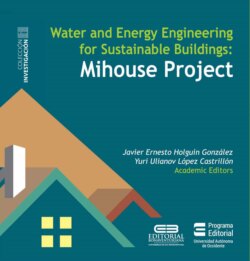Читать книгу Water and Energy Engineering for Sustainable Buildings Mihouse Project - Varios autores - Страница 11
Introduction
ОглавлениеGlobally, the concern for climate change has led governments and the community in general to consider the affectations that we as humans have been doing to the planet. The production of electricity is a relevant factor due to the pollution produced by fossil fuels used for this purpose. The excessive industrial production to cover the growing demands of products and services, combined with the disproportionate use of transport systems that use internal combustion engines responsible for the thousands of tons of CO2 equivalent release to the atmosphere, and the deforestation without control, are also part of the driven forces for global warming and climate change. On the other hand, oil as a king fuel, which moves the world economy, are numbered as it has already been reported, due to the few world reserves. This is affecting the oil companies and the countries with economic support from these companies, like it can be seen in the cases of Ecopetrol in Colombia, PDVSA in Venezuela and Repsol in Spain.
All of the above, is creating a growing interest in the environmental sustainability of the planet, humanity and obviously the resources that are owned by. It is for all these factors that the use of renewable energy resources, such as the sun, for energy production, and the application of new and more efficient construction technologies, are altogether the basis for the integral design of sustainable urban projects. The design and implementation of Sustainable Housing, which is the result of this project, uses solar energy as a source of electricity and reduces the use of natural resources, by promoting the reuse of wastewater, the use of rainwater and the recycling and use of solid waste. This house has been built with constructive processes that are friendly to the environment using renewable and local construction materials with a long-life cycle and low ecological footprint, such as concrete and plastic wood. Additionally, the house works with passive lighting and ventilation systems, reducing the energy consumption and the environmental impact during the operation of the building.
In order to promote knowledge concerning technologies that could be used in the construction of houses that take advantage of solar energy, since 2002, the US government is supporting the international university competition Solar Decathlon, which was held for the first time in 2015 in Latin America and in which the authors participated with the Mihouse project.
The Mihouse project is the result of an interinstitutional and interdisciplinary work developed by professors and students from the faculties of engineering, economic sciences and social communication of the Universidad Autónoma de Occidente (UAO) and architecture at the Universidad de San Buenaventura (USB) both located in Cali, Colombia. Within the framework of this project, students from the UAO Renewable Energy and Integrated Water Resource Management research groups participated in this project, both in charge of the UAO professors. As a result of this project, two publications have been developed; the first one focused on sustainable architecture and bioclimatic architecture (Villalobos, Cobo, y Montoya 2018) and the second one focused on water and energy engineering for sustainable buildings (i.e. this document).
